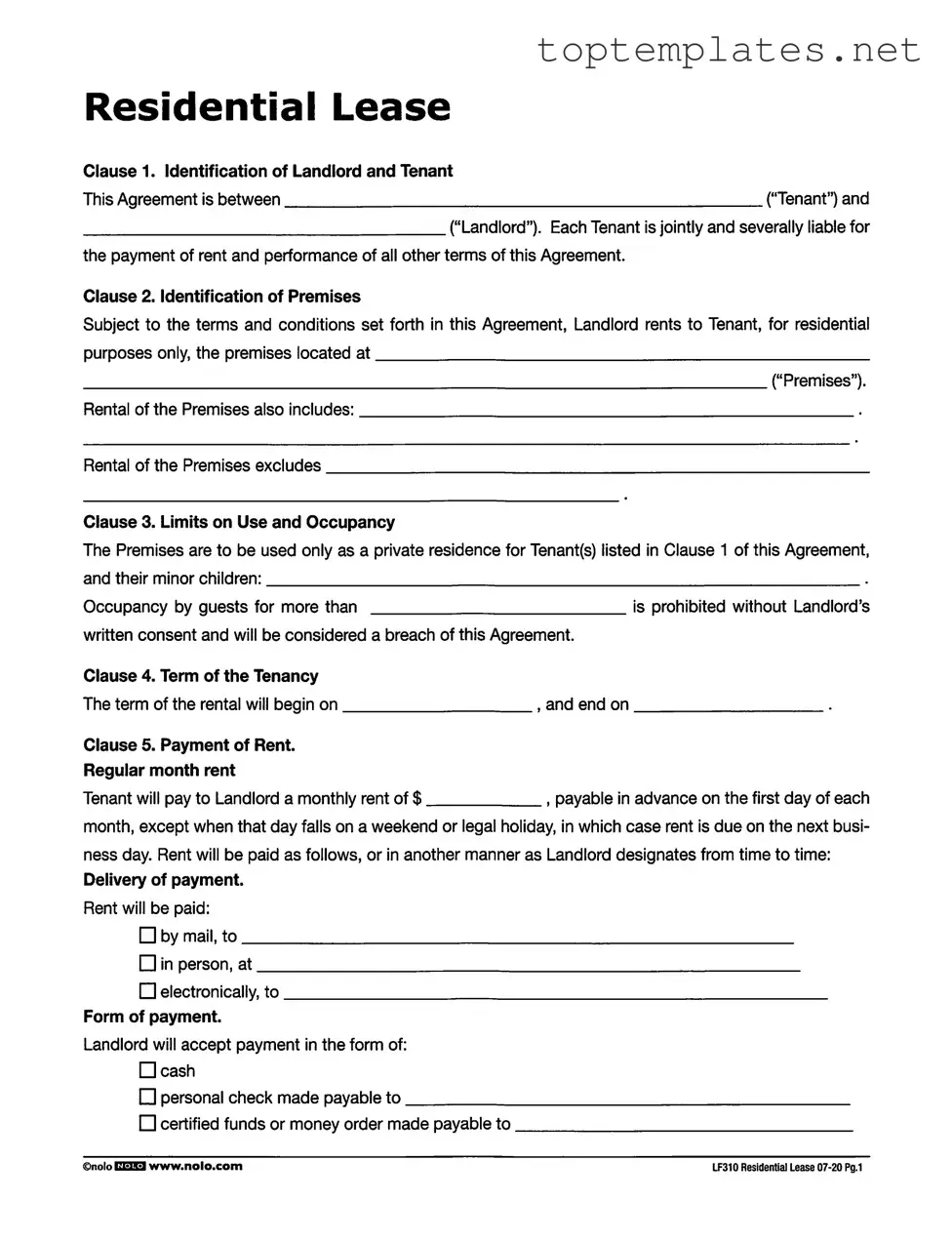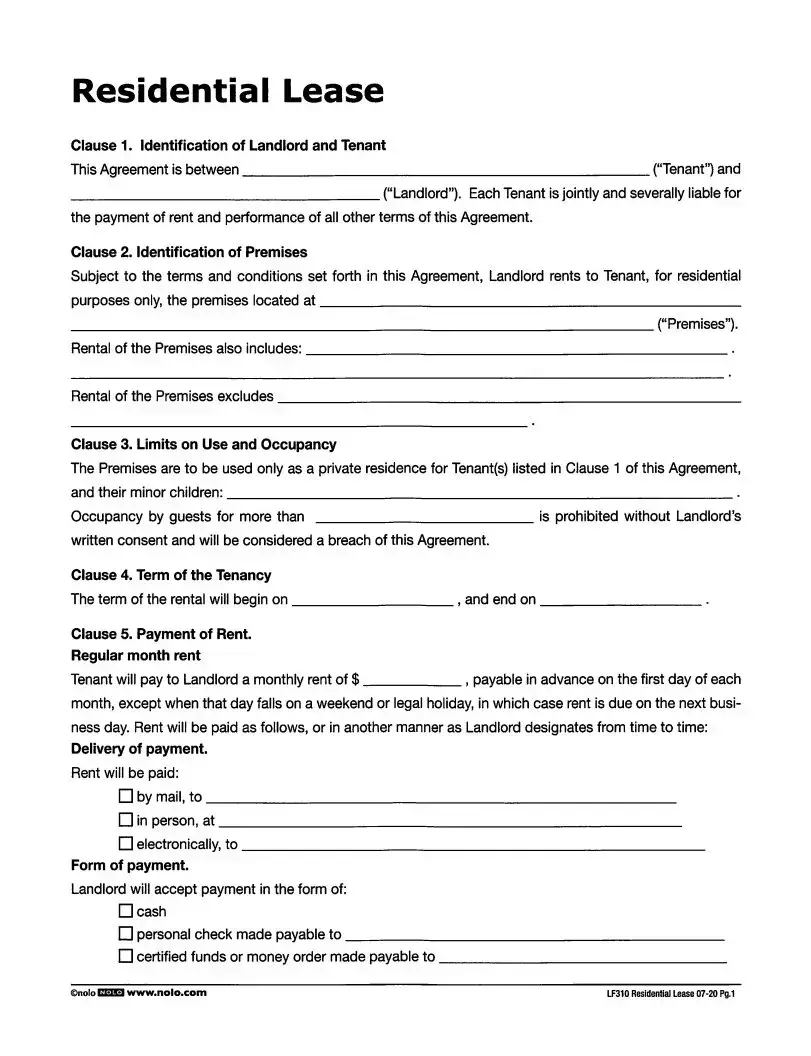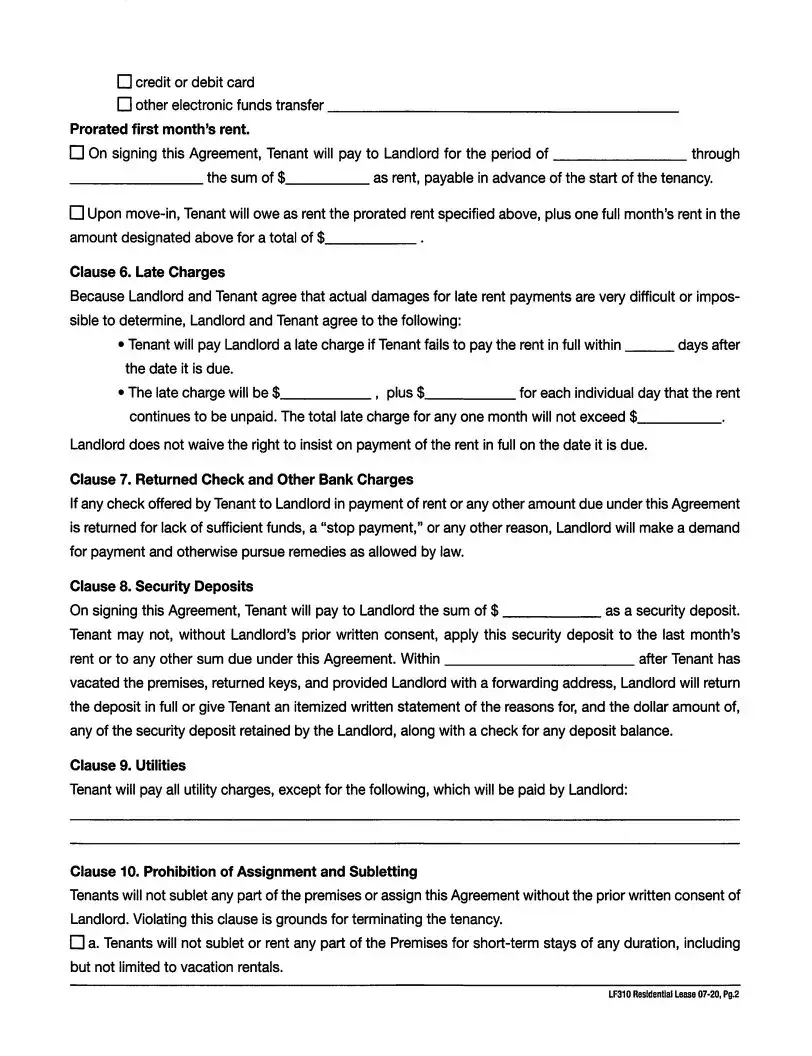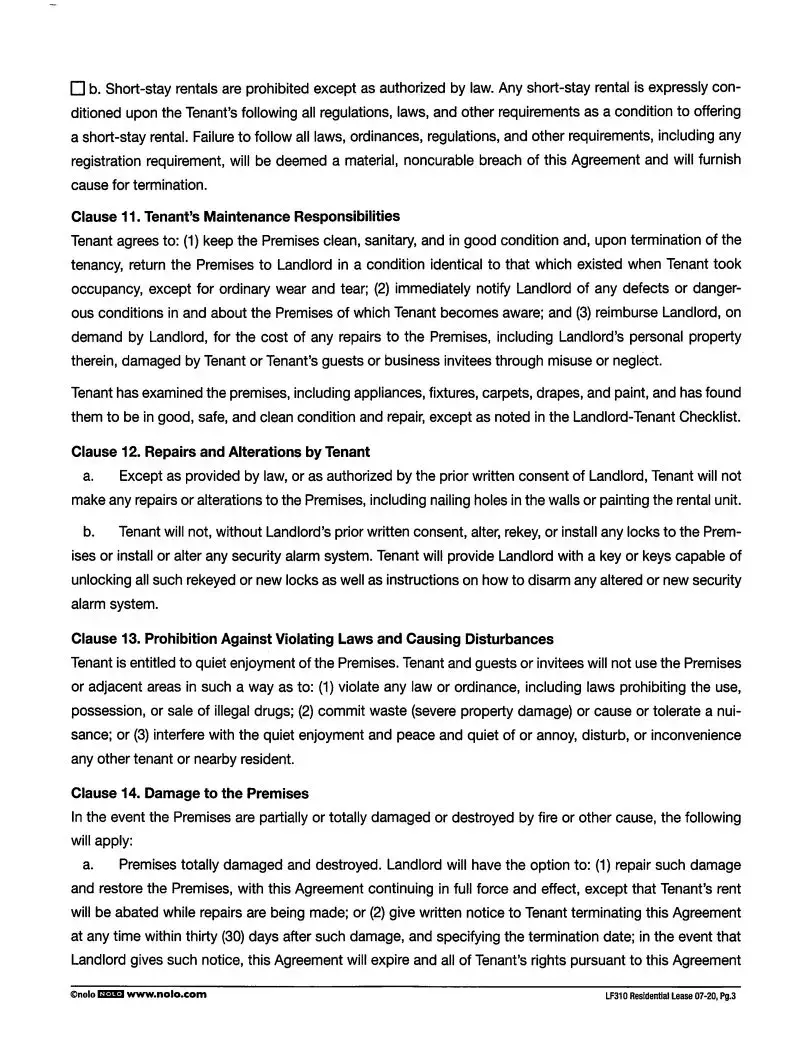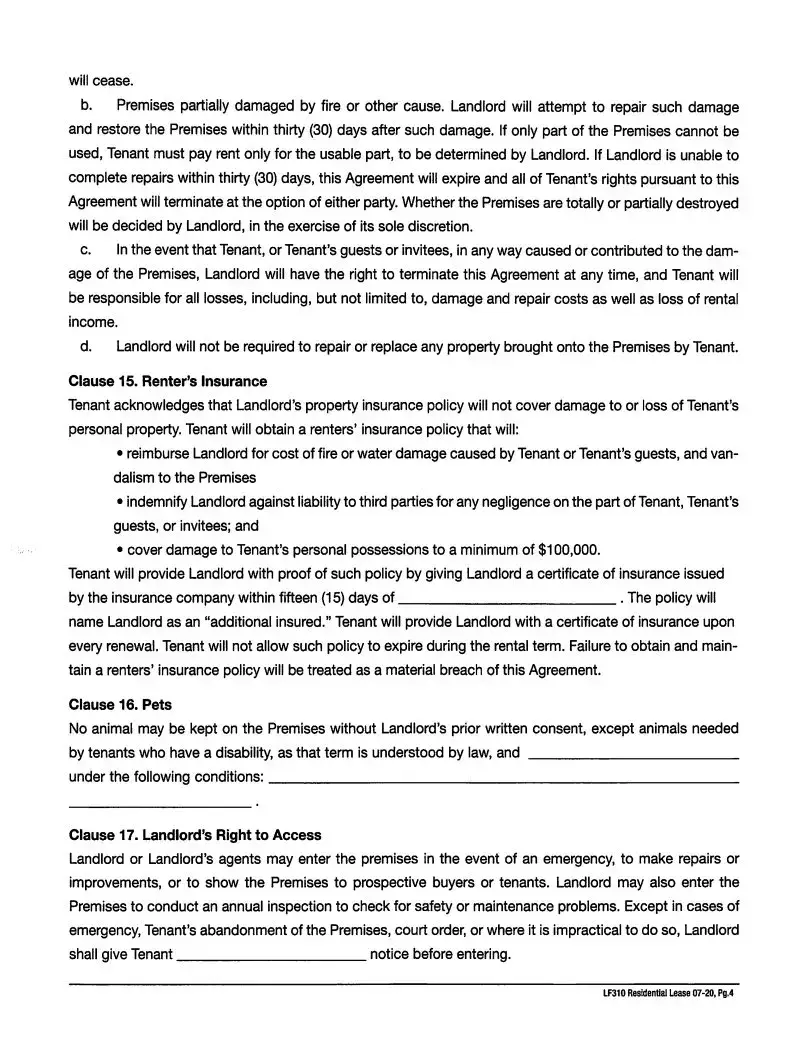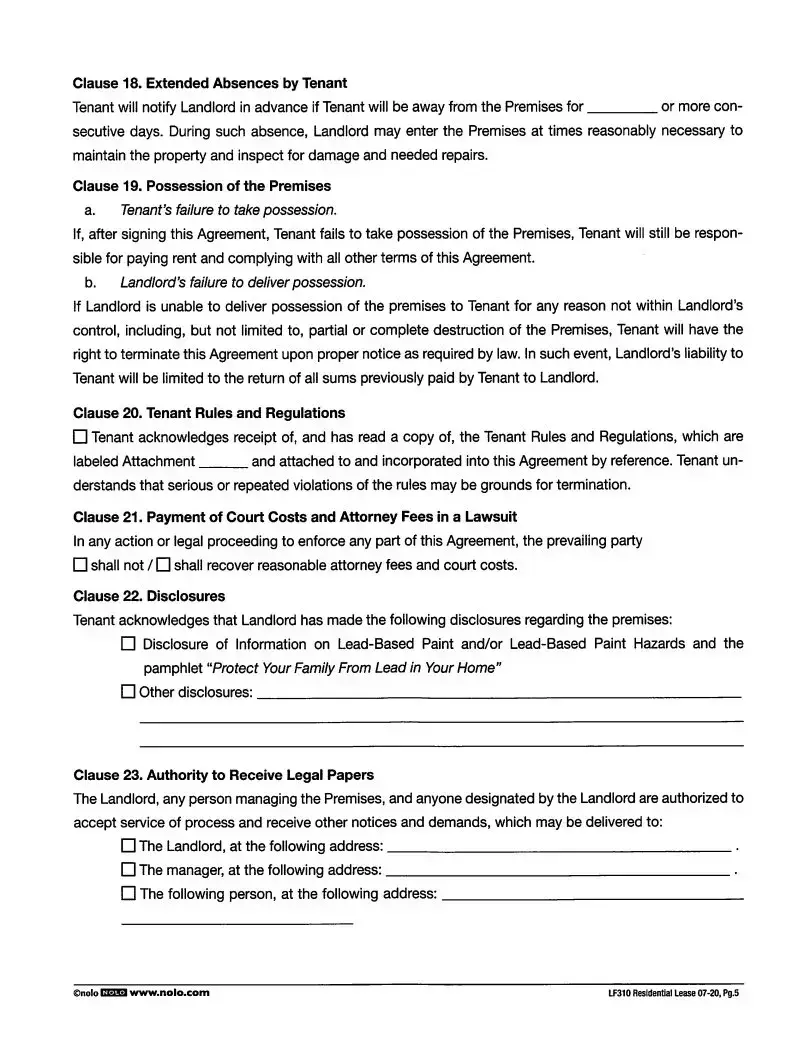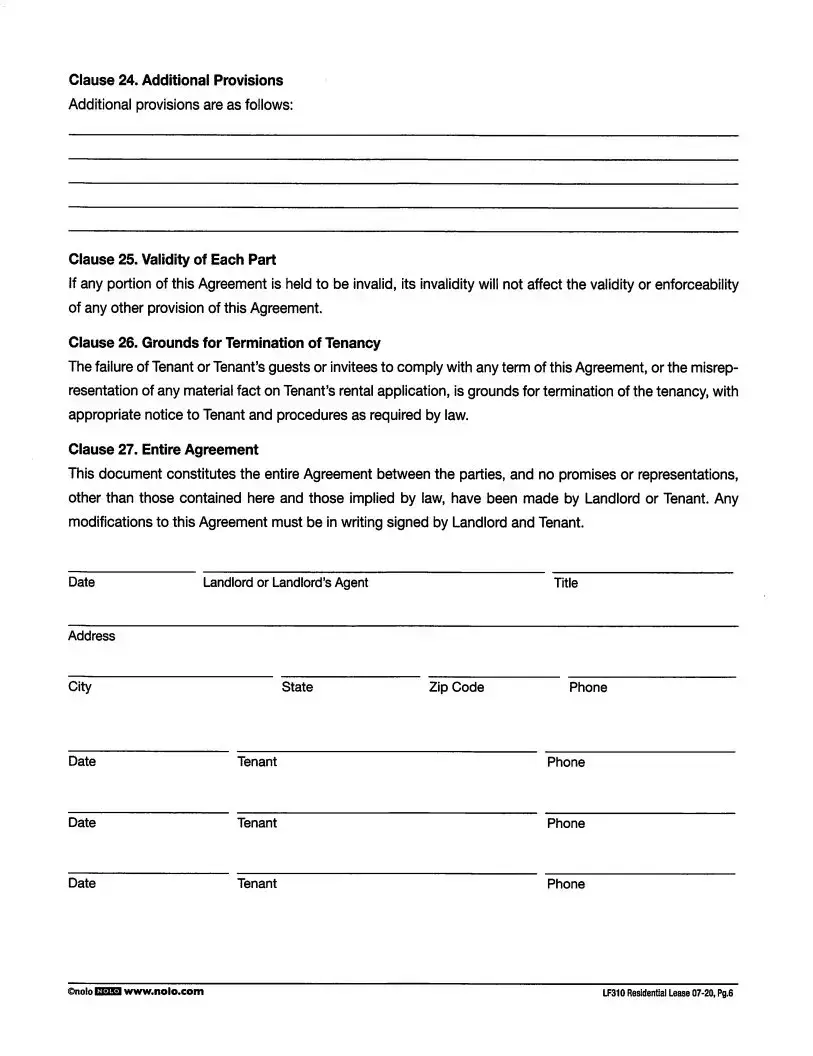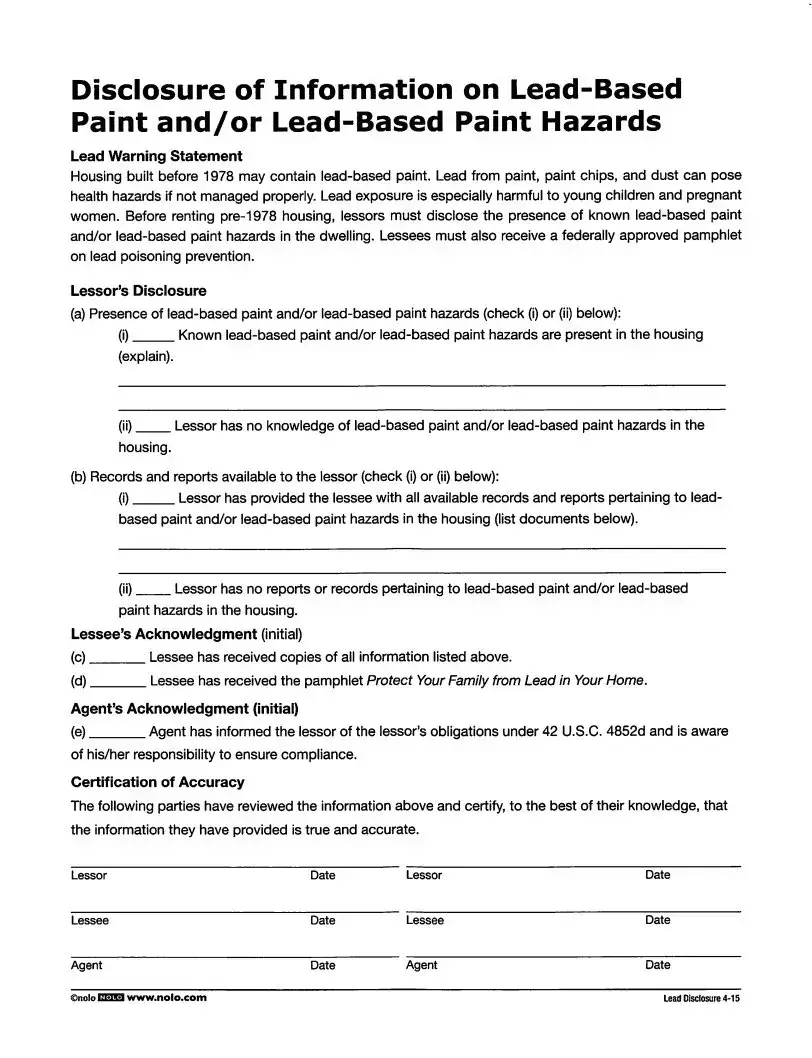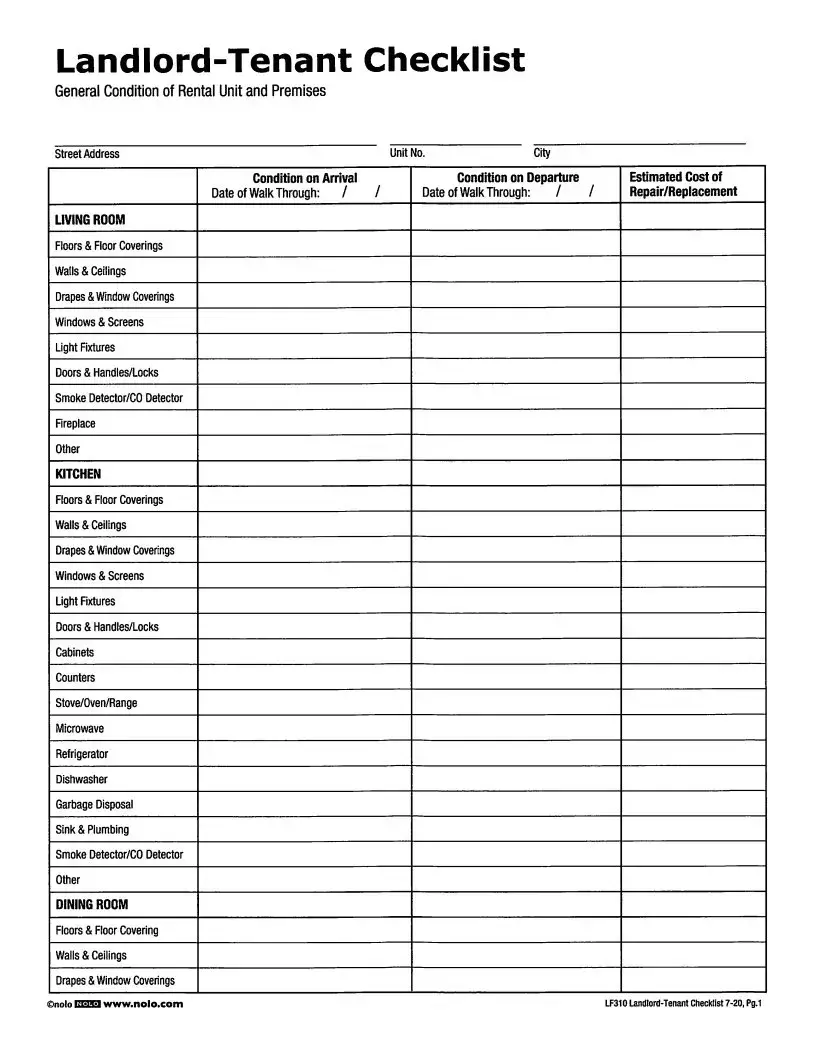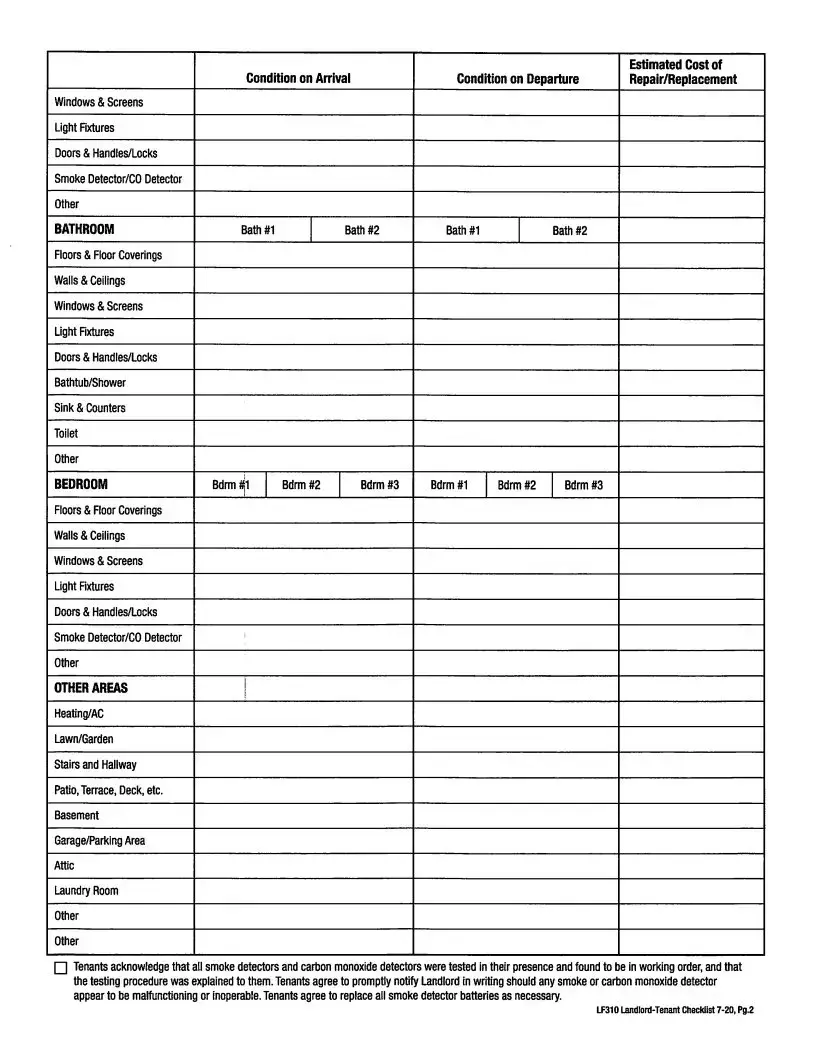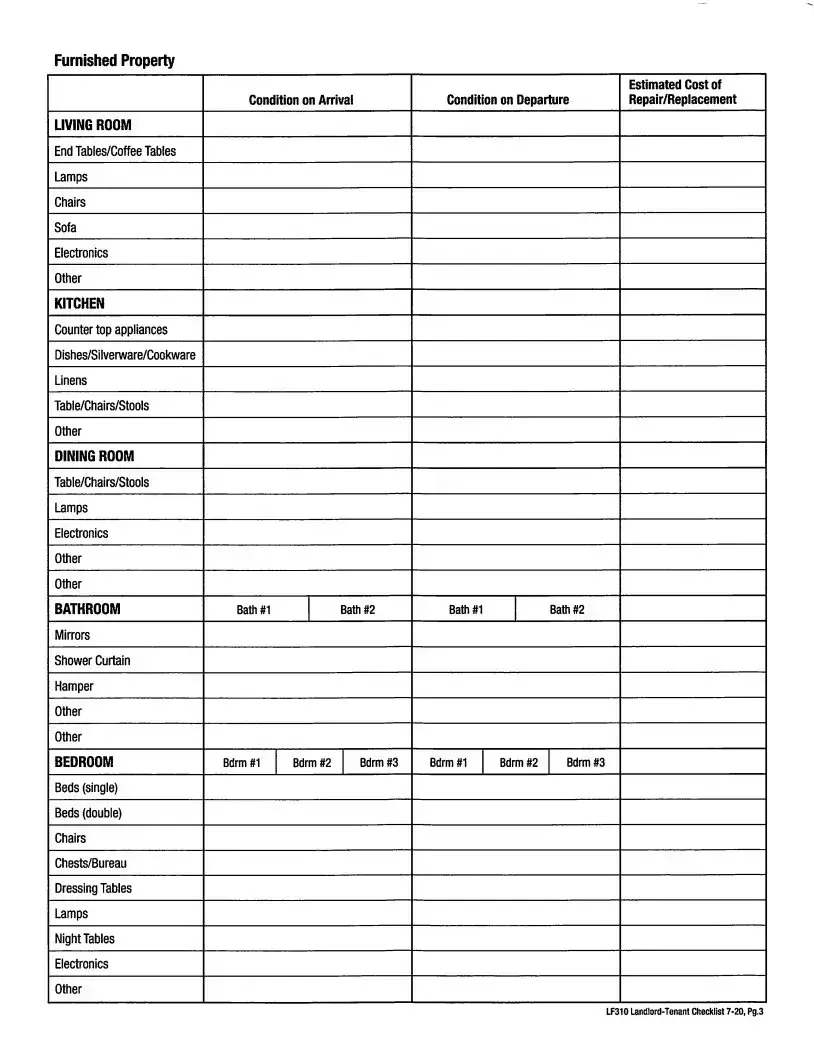What is the LF310 Residential Lease?
The LF310 Residential Lease is a legally binding document used to create an agreement between a landlord and tenant for the rental of residential property. This form outlines the terms and conditions of the lease, including identification of parties involved, description of the premises, rent payment specifics, use and occupancy limits, term of tenancy, and other important provisions related to late charges, security deposits, utilities, and restrictions on subletting and assignment.
Who needs to sign the LF310 Residential Lease agreement?
Both the landlord and all tenants occupying the premises need to sign the LF310 Residential Lease agreement. It is important that each tenant is named and signs the agreement because this holds each individual jointly and severally liable, meaning they are each responsible for fulfilling the terms of the lease and ensuring payment of rent and adherence to lease conditions.
What does "jointly and severally liable" mean in the context of this lease?
When tenants are described as "jointly and severally liable" in a lease agreement, this means that each tenant is individually responsible for the entire rent amount and compliance with all other terms of the lease, not just their own share or parts of it. In other words, if one tenant fails to pay their portion of the rent, the others can be held responsible for making up the difference to the landlord.
How is the security deposit handled according to the LF310 Residential Lease?
Upon signing the LF310 Residential Lease, the tenant is required to pay a security deposit to the landlord. This deposit cannot be applied to the last month’s rent or other charges unless the landlord gives written permission. After the tenant vacates the premises, returns keys, and provides the landlord with a forwarding address, the landlord must return the full security deposit or provide an itemized statement of deductions and the remaining balance of the deposit within a specified time frame.
What are the restrictions on use and occupancy?
The premises rented under the LF310 Residential Lease are to be used solely as a private residence by the tenants listed in the agreement and their minor children. Occupation by guests for more than a specified period or without the landlord’s written consent is a violation of the lease agreement. Additionally, tenants are prohibited from subletting any part of the premises or assigning the lease to another party without prior written approval from the landlord.
What provisions are made for late rent payments?
The lease specifies that if rent is not paid in full within a certain number of days after its due date, the tenant must pay a late charge. This late charge includes a fixed amount plus an additional amount for each day the rent remains unpaid, not exceeding a maximum total late charge for any one month. This clause reinforces the landlord's right to require payment in full on the due date while providing a structured penalty for late payments.
Are tenants responsible for utility payments?
According to the LF310 Residential Lease, tenants are responsible for all utility charges with the exception of specific utilities the landlord agrees to pay. This division of responsibility must be clearly stated in the lease to ensure both parties understand their obligations regarding utility payments throughout the tenancy.
